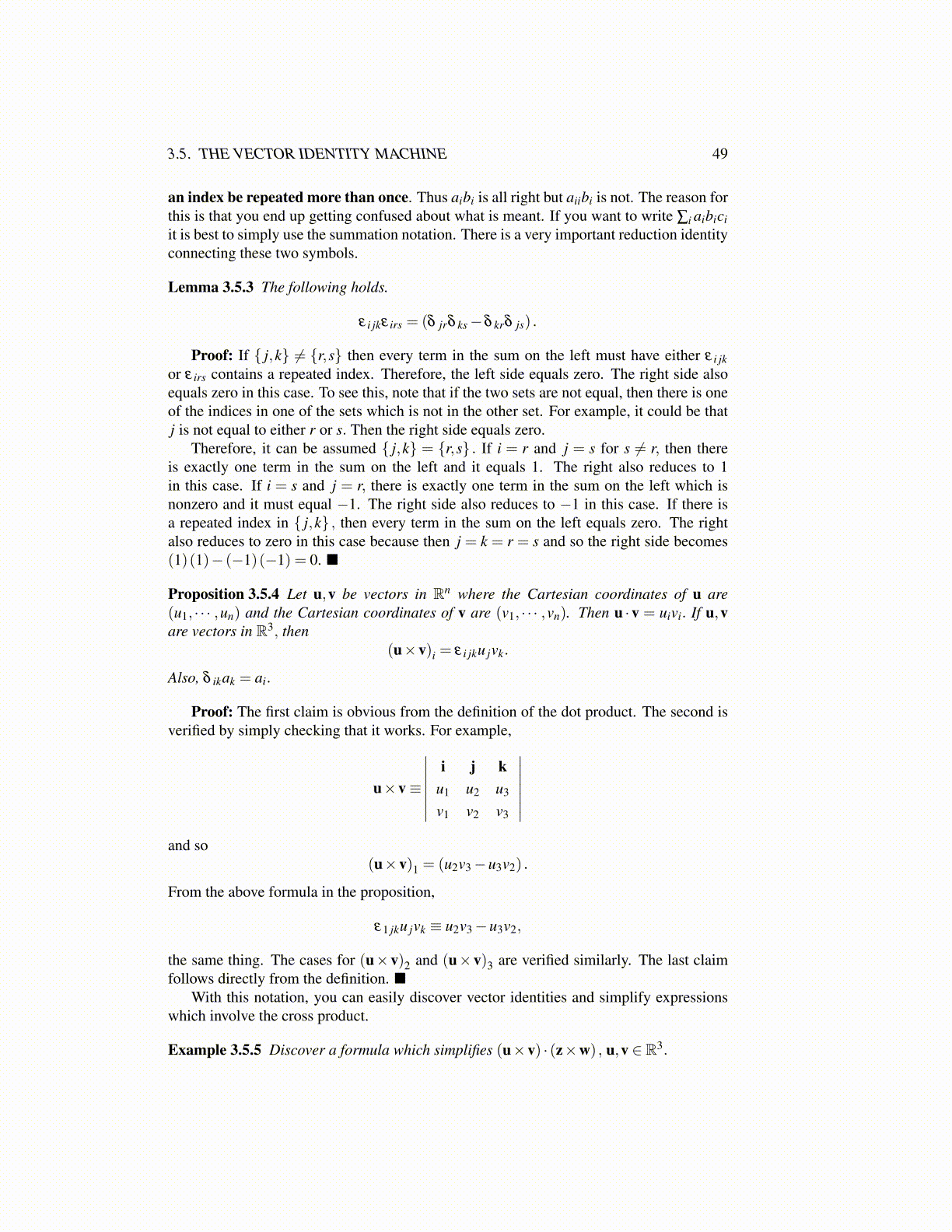
3.5. THE VECTOR IDENTITY MACHINE 49
an index be repeated more than once. Thus aibi is all right but aiibi is not. The reason forthis is that you end up getting confused about what is meant. If you want to write ∑i aibiciit is best to simply use the summation notation. There is a very important reduction identityconnecting these two symbols.
Lemma 3.5.3 The following holds.
ε i jkε irs = (δ jrδ ks−δ krδ js) .
Proof: If { j,k} ̸= {r,s} then every term in the sum on the left must have either ε i jkor ε irs contains a repeated index. Therefore, the left side equals zero. The right side alsoequals zero in this case. To see this, note that if the two sets are not equal, then there is oneof the indices in one of the sets which is not in the other set. For example, it could be thatj is not equal to either r or s. Then the right side equals zero.
Therefore, it can be assumed { j,k} = {r,s} . If i = r and j = s for s ̸= r, then thereis exactly one term in the sum on the left and it equals 1. The right also reduces to 1in this case. If i = s and j = r, there is exactly one term in the sum on the left which isnonzero and it must equal −1. The right side also reduces to −1 in this case. If there isa repeated index in { j,k} , then every term in the sum on the left equals zero. The rightalso reduces to zero in this case because then j = k = r = s and so the right side becomes(1)(1)− (−1)(−1) = 0. ■
Proposition 3.5.4 Let u,v be vectors in Rn where the Cartesian coordinates of u are(u1, · · · ,un) and the Cartesian coordinates of v are (v1, · · · ,vn). Then u ·v = uivi. If u,vare vectors in R3, then
(u×v)i = ε i jku jvk.
Also, δ ikak = ai.
Proof: The first claim is obvious from the definition of the dot product. The second isverified by simply checking that it works. For example,
u×v≡
∣∣∣∣∣∣∣i j k
u1 u2 u3
v1 v2 v3
∣∣∣∣∣∣∣and so
(u×v)1 = (u2v3−u3v2) .
From the above formula in the proposition,
ε1 jku jvk ≡ u2v3−u3v2,
the same thing. The cases for (u×v)2 and (u×v)3 are verified similarly. The last claimfollows directly from the definition. ■
With this notation, you can easily discover vector identities and simplify expressionswhich involve the cross product.
Example 3.5.5 Discover a formula which simplifies (u×v) · (z×w) , u,v ∈ R3.